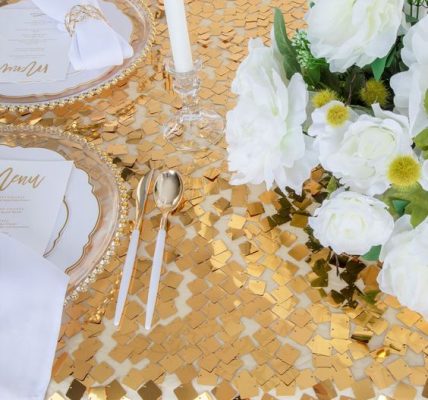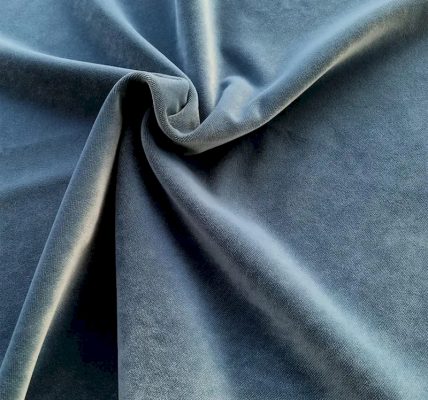Velvet fabric has captivated the fashion and interior design worlds for centuries with its rich texture, luxurious sheen, and opulent feel. From royal garments to upscale home decor, velvet adds a sense of sophistication and elegance to any setting. But what exactly is velvet fabric, and what makes it so unique? In this comprehensive guide, we’ll delve into everything you need to know about velvet, including its history, characteristics, types, uses, and care tips, so you can enjoy this stunning fabric to its fullest.

Understanding Velvet Fabric: What Makes it Special?
Velvet is a type of woven fabric known for its smooth, soft texture and lustrous appearance. What sets velvet apart from other fabrics is its distinctive pile, which is created by looping and then cutting the fibers during the weaving process. This pile gives velvet its unique touch and visual depth, creating an effect that changes with light and movement. Traditionally made from silk, velvet is now available in various fibers, including cotton, polyester, and blends, making it more versatile and accessible.
The Origins of Velvet: A Royal Fabric
The history of velvet can be traced back to ancient civilizations. It first gained prominence in the Middle East and later spread to Europe, where it became a luxury material associated with royalty and nobility. During the Renaissance, velvet was highly sought after by European aristocracy and used extensively in clothing and interior furnishings. Thanks to modern technology, velvet is no longer exclusive to the wealthy, and its production has diversified, allowing for a broader range of styles and uses.
Key Characteristics of Velvet
- Luxurious Feel: Velvet is soft to the touch, often described as plush or smooth, making it ideal for garments and furnishings that require a comfortable feel.
- Rich Appearance: Velvet’s unique pile creates a shimmering effect that adds depth and richness, giving it a high-end aesthetic.
- Variety of Fibers: Velvet can be made from natural fibers like silk and cotton or synthetic fibers like polyester, making it adaptable to different needs and budgets.
- Durability: While velvet is often perceived as delicate, many modern types of velvet are surprisingly durable, especially those made from synthetic fibers.
Types of Velvet Fabric: Exploring Different Varieties
Not all velvet is created equal. Depending on the fibers used and the manufacturing process, velvet can vary significantly in look and feel. Here are some of the most popular types of velvet fabric:
1. Silk Velvet
- Description: Silk velvet is the most luxurious type of velvet, known for its exceptionally soft texture and brilliant sheen.
- Characteristics: Lightweight, delicate, and has a high gloss.
- Uses: Often used in high-end fashion and evening wear due to its elegant drape.

2. Cotton Velvet
- Description: Made from natural cotton fibers, cotton velvet is heavier and less shiny than silk velvet.
- Characteristics: Matte finish, durable, and versatile.
- Uses: Commonly used in home decor, especially for upholstery and curtains.
3. Crushed Velvet
- Description: Crushed velvet is treated to create a textured, irregular pattern that reflects light in various directions.
- Characteristics: Has a crinkled appearance and enhanced sheen.
- Uses: Ideal for fashion items like dresses and accessories, as well as decorative pillows and upholstery.
4. Stretch Velvet
- Description: This type of velvet includes a blend of spandex or lycra, allowing it to stretch.
- Characteristics: Flexible and comfortable, with a bit of elasticity.
- Uses: Commonly used for dancewear, costumes, and form-fitting garments.
5. Velveteen
- Description: Often confused with velvet, velveteen is made from cotton and has a shorter pile.
- Characteristics: Slightly rougher texture and less sheen compared to traditional velvet.
- Uses: Used in apparel and accessories, especially when a more matte look is desired.
How Velvet is Used: Versatile and Stylish Applications
Velvet’s versatility allows it to be used across various applications, from clothing to home decor. Its luxurious aesthetic and soft texture make it a popular choice for anyone looking to add elegance to their space or wardrobe.

Fashion and Accessories
In fashion, velvet has a timeless appeal. Velvet dresses, jackets, and accessories like scarves and bags are popular choices, especially for evening wear and special occasions. The fabric’s ability to catch and reflect light adds depth to any garment, making it a statement piece. Velvet shoes, particularly heels and boots, are also trendy, adding a unique texture and visual interest to outfits.
Home Decor and Upholstery
Velvet is a favorite choice in interior design for items like sofas, armchairs, curtains, and pillows. Its soft texture and rich colors create a cozy yet upscale feel in living spaces. Velvet sofas and armchairs are especially popular, lending a touch of sophistication to any room. However, because of its unique pile, velvet used in home decor often requires specific care to maintain its appearance.
Craft and DIY Projects
Velvet fabric is also popular among crafters and DIY enthusiasts. From holiday ornaments to homemade cushion covers, velvet adds a special touch to handmade projects. Velvet ribbon, for instance, is commonly used for wrapping gifts or creating decorative elements.
How to Clean Velvet Fabric: Care Tips for Longevity
Despite its luxurious look, velvet can be easier to care for than many people think. Proper maintenance and cleaning techniques can help velvet retain its plushness and shine. Here are some essential tips for cleaning and maintaining velvet fabric.
Spot Cleaning Velvet
For minor spills or stains, prompt spot cleaning is key to preventing the stain from setting. Use a clean, damp cloth to blot—never rub—the affected area. For tougher stains, consider using a mild upholstery cleaner specifically designed for velvet, but always test a small area first.
Brushing Velvet
Regularly brushing velvet with a soft-bristle brush can help maintain the fabric’s pile and prevent it from looking crushed or matted. Brushing in the direction of the pile also helps remove dust and debris, keeping the velvet looking fresh.

Using a Steamer
Velvet can develop creases or crushed areas over time, especially on heavily used furniture or clothing. Using a steamer on low heat can help lift the pile and restore the fabric’s smooth surface. Hold the steamer a few inches away and move it gently over the surface to avoid damaging the pile.
Professional Cleaning
For larger items or serious stains, professional cleaning is often the safest option. Velvet upholstery, in particular, benefits from professional care, as they have the tools and expertise to handle the fabric properly.
General Velvet Care Tips
- Avoid Direct Sunlight: Sunlight can fade velvet over time, so try to position velvet furniture away from windows or use window treatments to filter light.
- Control Humidity: Velvet fabric can absorb moisture, which may cause it to lose its crisp texture. Keep velvet in a well-ventilated, dry area.
- Avoid Heavy Items: Don’t place heavy objects on velvet furniture or decor, as the weight can crush the pile and cause lasting indentations.
Pros and Cons of Velvet Fabric
Understanding the benefits and drawbacks of velvet fabric can help you decide if it’s the right choice for your home or wardrobe.
Pros
- Luxurious Look and Feel: Velvet’s plush texture and rich appearance add an instant touch of luxury.
- Versatile: Available in a variety of fibers and finishes, velvet can be used for clothing, decor, and more.
- Durable: With proper care, velvet is surprisingly long-lasting and can handle regular use.
Cons
- Requires Careful Maintenance: Velvet needs specific cleaning techniques to maintain its appearance.
- Prone to Creasing: The pile can become crushed or flattened over time, especially with heavy use.
- Sensitive to Sunlight: Velvet can fade if exposed to direct sunlight for prolonged periods.
Velvet Fabric Care for Lasting Elegance
Velvet fabric adds a touch of luxury to any setting, and with proper care, it can remain beautiful for years. Understanding how to clean velvet fabric safely—whether it’s a simple spot treatment or a full deep clean—will keep its lush look and feel intact, preserving the fabric’s elegance for the long haul.
Velvet is unique due to its delicate pile, a raised texture that gives it a soft, plush feel. However, this also makes it more vulnerable to damage from spills, dust, and heavy wear. Maintaining its appearance requires a gentle approach and a consistent routine, especially if your velvet items are in frequent use. Fortunately, caring for velvet isn’t as daunting as it seems. With the right techniques, you can easily keep your velvet pieces looking fresh, vibrant, and free from unsightly marks.

Regular Brushing and Dusting
Dust can settle on velvet, causing the fabric to look dull over time. Regularly brushing velvet items with a soft-bristled brush helps maintain their luster by removing surface dust and preventing it from embedding within the pile. Brushing in the direction of the pile not only cleans the fabric but also revitalizes its plush texture, preventing areas from becoming flat or matted. For large pieces, like velvet sofas or curtains, a handheld vacuum with a soft brush attachment can be used to keep dust at bay.


